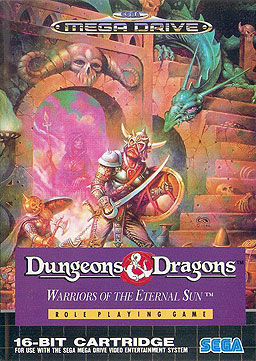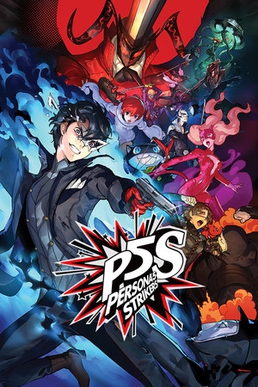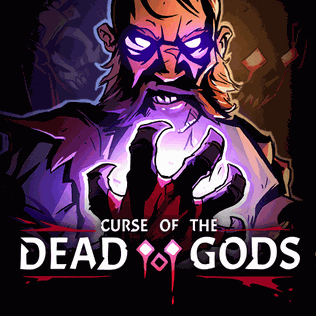
Dungeons & Dragons: Warriors of the Eternal Sun is a role-playing video game developed for the Sega Genesis in 1992 by Westwood Associates. The game tells the story of a party of adventurers who have been transported to an unknown world and must survive against its hostile inhabitants while learning about their new home and seeking allies. It is based on the Dungeons & Dragons (D&D) game rules, and uses creatures and themes from the D&D Hollow World campaign setting, such as Blacklore elves, the Azcans, beastmen, Malpheggi lizardmen, and dinosaurs.

Pokémon Mystery Dungeon: Explorers of Time and Pokémon Mystery Dungeon: Explorers of Darkness are a matched pair of Pokémon games developed by Chunsoft and published by The Pokémon Company and Nintendo for the Nintendo DS. The two games were released in Japan in September 2007, and in North America and Europe in 2008. A third version, Pokémon Mystery Dungeon: Explorers of Sky, was released for the same hardware in 2009.

Darkest Dungeon is a roguelike role-playing video game developed and published by Red Hook Studios. The game was first released for Microsoft Windows and OS X in January 2016, which followed a year-long early access development period. Later that year, it was released for PlayStation 4, PlayStation Vita, and Linux, with a port for iOS being released in 2017, and ports for Nintendo Switch and Xbox One being released by 2018.

Pokémon Super Mystery Dungeon is a roguelike video game in the Pokémon Mystery Dungeon series developed by Spike Chunsoft and published by The Pokémon Company and Nintendo for the Nintendo 3DS handheld game console. Like its predecessors, players control a human who has awoken as a Pokémon in a world filled entirely by Pokémon and must travel through dungeons, completing missions and battling enemies. The game was released in Japan on September 17, 2015; in North America on November 20, 2015; in Europe on February 19, 2016; and in Australia on February 20, 2016;
Enter the Gungeon is a 2016 bullet hell roguelike game developed by Dodge Roll and published by Devolver Digital. Set in the firearms-themed Gungeon, gameplay follows several player characters called Gungeoneers as they traverse procedurally generated rooms to find a gun that can "kill the past". The Gungeoneers fight against bullet-shaped enemies, which are fought using both conventional and exotic weapons. Enter the Gungeon features a permadeath system, causing the Gungeoneers to lose all obtained items and start again from the first level upon death. Between playthroughs, players can travel to an area called the Breach, where they can converse with non-player characters and unlock new items randomly encountered while playing.

YIIK: A Postmodern RPG is a role-playing video game by American developer Ackk Studios for Microsoft Windows, Mac, PlayStation 4, and Nintendo Switch. The game was released on January 17, 2019.

Miitopia is a 2016 role-playing video game by Nintendo originally released for the Nintendo 3DS in Japan in 2016 and worldwide in 2017, with a remastered version released for the Nintendo Switch in May 21, 2021. The game features customizable Mii characters in a turn-based battle system and follows the story of a group of heroes battling the Dark Lord, who is stealing the faces of Miitopia's inhabitants. The game received mixed reviews, with critics praising its creative life simulation elements and humor while criticizing its combat system and repetitiveness.

Dead Cells is a 2018 roguelike-Metroidvania game developed by Motion Twin and Evil Empire, and published by Motion Twin. The player takes the role of an amorphous creature called the Prisoner. As the Prisoner, the player must fight their way out of a diseased island in order to slay the island's King. The player gains weapons, treasure and other tools through exploration of the procedurally-generated levels. Dead Cells features a permadeath system, causing the player to lose all items and other abilities upon dying. A currency called Cells can be collected from defeated enemies, allowing the player to purchase permanent upgrades.

City of Brass is a single-player first-person dungeon crawl video game, set in a procedurally generated, Arabian Nights-themed city of interconnecting corridors, courtyards and rooms. Players assume the role of a thief, fighting to reach a treasure hidden in the heart of a mythical city filled with traps and enemies. It was developed by Australian independent video game studio Uppercut Games and was announced on 6 July 2017 as being in development for Microsoft Windows, PlayStation 4, and Xbox One. The Windows version was released on Steam via its Early Access program on 18 September 2017.

The Elder Scrolls: Blades is a free-to-play action role-playing game developed by Bethesda Game Studios and published by Bethesda Softworks. It is a spin-off of The Elder Scrolls series, set following The Elder Scrolls IV: Oblivion and preceding The Elder Scrolls V: Skyrim. Following over a year of early access on Android and iOS devices, the full version of Blades was released for Android, iOS and Nintendo Switch in May 2020. The game received generally negative reviews from critics.

Minecraft Dungeons is a 2020 dungeon crawler video game developed by Mojang Studios and Double Eleven and published by Xbox Game Studios. It is a spin-off of the sandbox video game Minecraft and was released for Nintendo Switch, PlayStation 4, Windows, and Xbox One in May 2020. It was also adapted into an arcade video game by Raw Thrills. The arcade version released in May 2021. The game would later cease development on September 28, 2023.
Deltarune is an episodic role-playing video game developed by Toby Fox as a follow-up to his 2015 video game Undertale. In the game, the player controls a human teenager, Kris, who is destined to save the world together with Susie, a monster, and Ralsei, a prince from the Dark World. During their quest to seal the Dark Fountains prophesied to end the world, the group makes both friends and foes. The combat system is turn-based and uses bullet hell mechanics. Similarly to Undertale, enemy encounters can be resolved peacefully or through violence.

Cadence of Hyrule: Crypt of the NecroDancer Featuring The Legend of Zelda is a rhythm game developed by Brace Yourself Games and published by Nintendo. The game is a crossover of Crypt of the NecroDancer with The Legend of Zelda, combining the rhythm-based movement and fighting mechanics with elements reminiscent of earlier games in the Zelda franchise. The game was released for the Nintendo Switch on June 13, 2019 to generally positive reviews from critics.

Persona 5 Strikers is an action role-playing game developed by Omega Force and P-Studio and published by Atlus. The game is a crossover between Koei Tecmo's Dynasty Warriors franchise and the Persona series developed by Atlus. The game's narrative is set half a year after the events of Persona 5, and follows Joker and the rest of the Phantom Thieves of Hearts as they investigate a series of mysterious events involving people across Japan.
A roguelike deck-building game is a hybrid genre of video games that combines the nature of deck-building card games with procedural-generated randomness from roguelike games.

Forager is an open-world adventure game developed by Argentine studio HopFrog and published by Humble Bundle. The game was officially released for Microsoft Windows in April 2019, and later became available for Nintendo Switch, PlayStation 4, Xbox One, iOS, and Android.

Curse of the Dead Gods is a 2021 roguelike video game developed by Passtech Games and published by Focus Home Interactive. The game was released via early access in March 2020, and in full in February 2021 for Microsoft Windows, Nintendo Switch, PlayStation 4, and Xbox One.

UnderMine is a roguelike action dungeon crawler video game developed and published by Thorium. It was released for Microsoft Windows and Xbox One on August 6, 2020, which followed an early access release one year earlier. Nintendo Switch and PlayStation 4 versions were released in February and March 2021, respectively.

Mistover is a 2019 roguelike dungeon crawler role-playing video game developed and published by Krafton for Microsoft Windows, Nintendo Switch, and PlayStation 4. Mistover is set in a ravaged world recovering from a mass invasion of monstrous creatures from another realm, and its storyline follows the journey of a party of adventuring heroes who are on a quest to discover the source of the invasion. Players navigate environments from an isometric perspective with a party of procedurally generated player characters drawn from a roster of eight character classes to fight monsters and acquire loot recovered from the exploration of levels. A phenomenon known as "mist" is prevalent throughout the game world and negatively influences its characters, monsters, and items.

Dungeon Encounters is a 2021 role-playing video game developed by Square Enix and Cattle Call and published by Square Enix. It was released for Nintendo Switch, PlayStation 4, and Windows. Dungeon Encounters was the first game Hiroyuki Ito had directed in 14 years and has received positive reviews from critics for its gameplay.

















